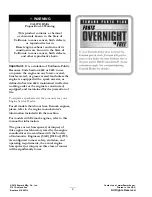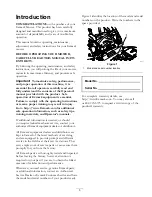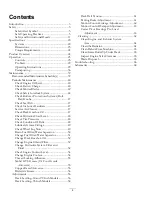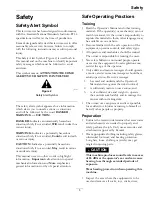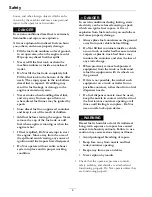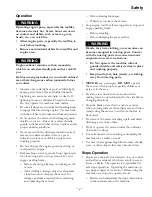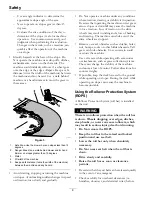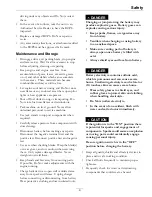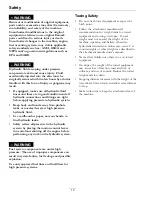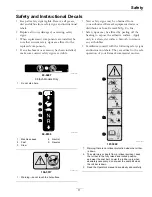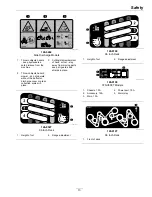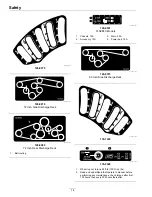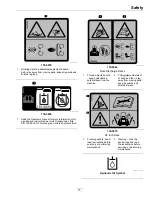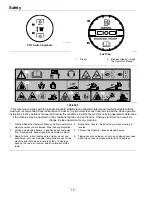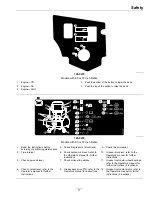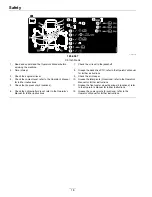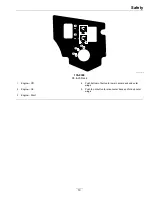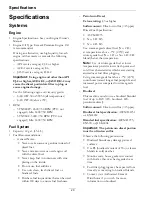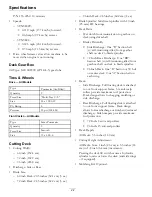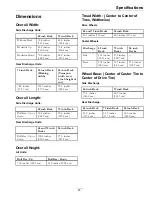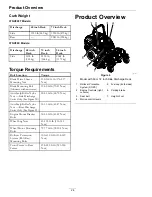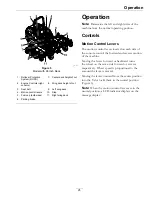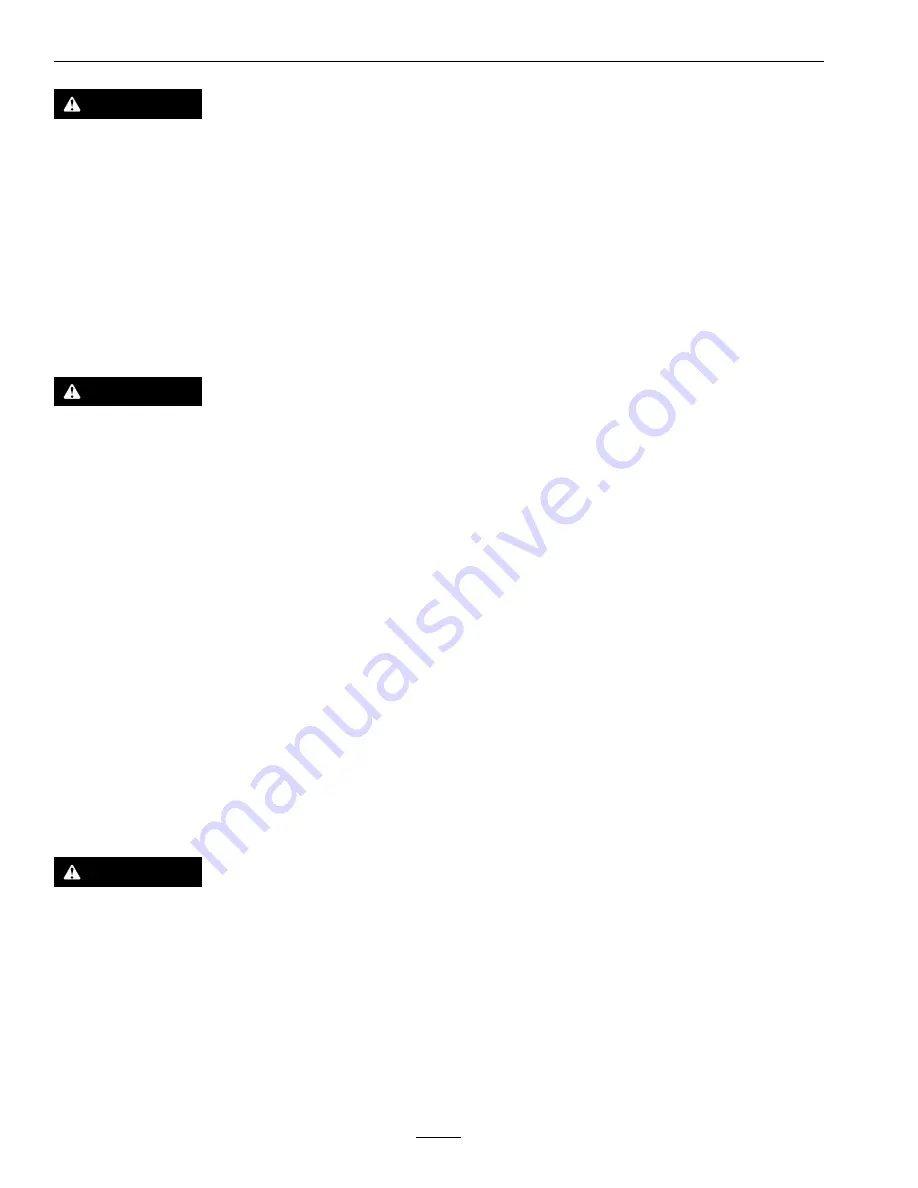
Safety
WARNING
Removal or modification of original equipment,
parts and/or accessories may alter the warranty,
controllability, and safety of the machine.
Unauthorized modifications to the original
equipment or failure to use original Exmark
parts could lead to serious injury or death.
Unauthorized changes to the machine, engine,
fuel or venting system, may violate applicable
safety standards such as: ANSI, OSHA and
NFPA and/or government regulations such as
EPA and CARB.
WARNING
Hydraulic fluid escaping under pressure
can penetrate skin and cause injury. Fluid
accidentally injected into the skin must be
surgically removed within a few hours by a doctor
familiar with this form of injury or gangrene may
result.
•
If equipped, make sure all hydraulic fluid
hoses and lines are in good condition and all
hydraulic connections and fittings are tight
before applying pressure to hydraulic system.
•
Keep body and hands away from pinhole
leaks or nozzles that eject high pressure
hydraulic fluid.
•
Use cardboard or paper, not your hands, to
find hydraulic leaks.
•
Safely relieve all pressure in the hydraulic
system by placing the motion control levers
in neutral and shutting off the engine before
performing any work on the hydraulic system.
WARNING
Fuel system components are under high
pressure. The use of improper components can
result in system failure, fuel leakage and possible
explosion.
Use only approved fuel lines and fuel filters for
high pressure systems.
Towing Safety
•
Do not attach towed equipment except at the
hitch point.
•
Follow the attachment manufacturer's
recommendation for weight limits for towed
equipment and towing on slopes. Towed
weight must not exceed the weight of the
machine, operator, and ballast; otherwise
hydrostatic transmission failure may occur. Use
counterweights or wheel weights as described in
the attachment manufacturer's manual.
•
Never allow children or others in or on towed
equipment.
•
On slopes, the weight of the towed equipment
may cause loss of traction, increased risk of
rollover, and loss of control. Reduce the towed
weight and slow down.
•
Stopping distance increases with the weight of the
towed load. Travel slowly and allow extra distance
to stop.
•
Make wide turns to keep the attachment clear of
the machine.
10


